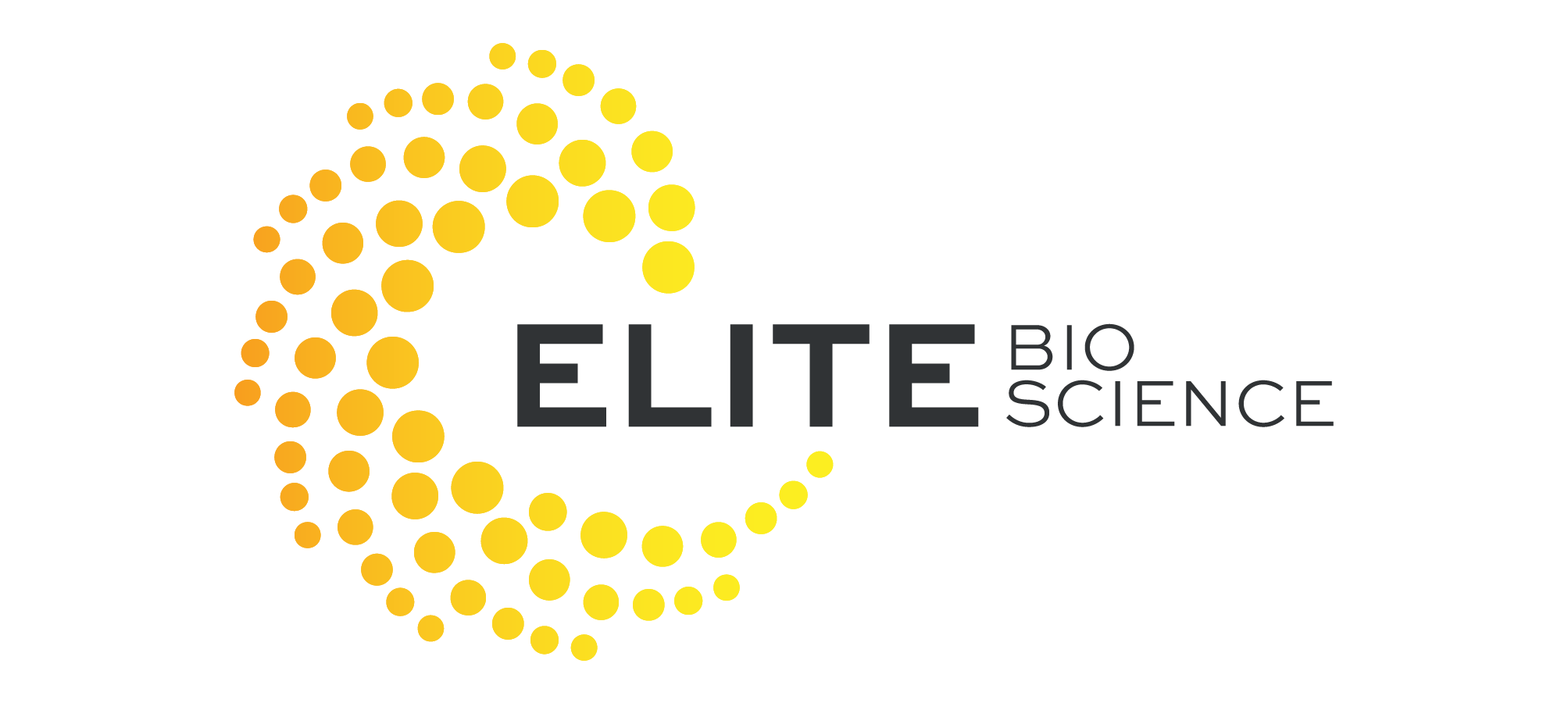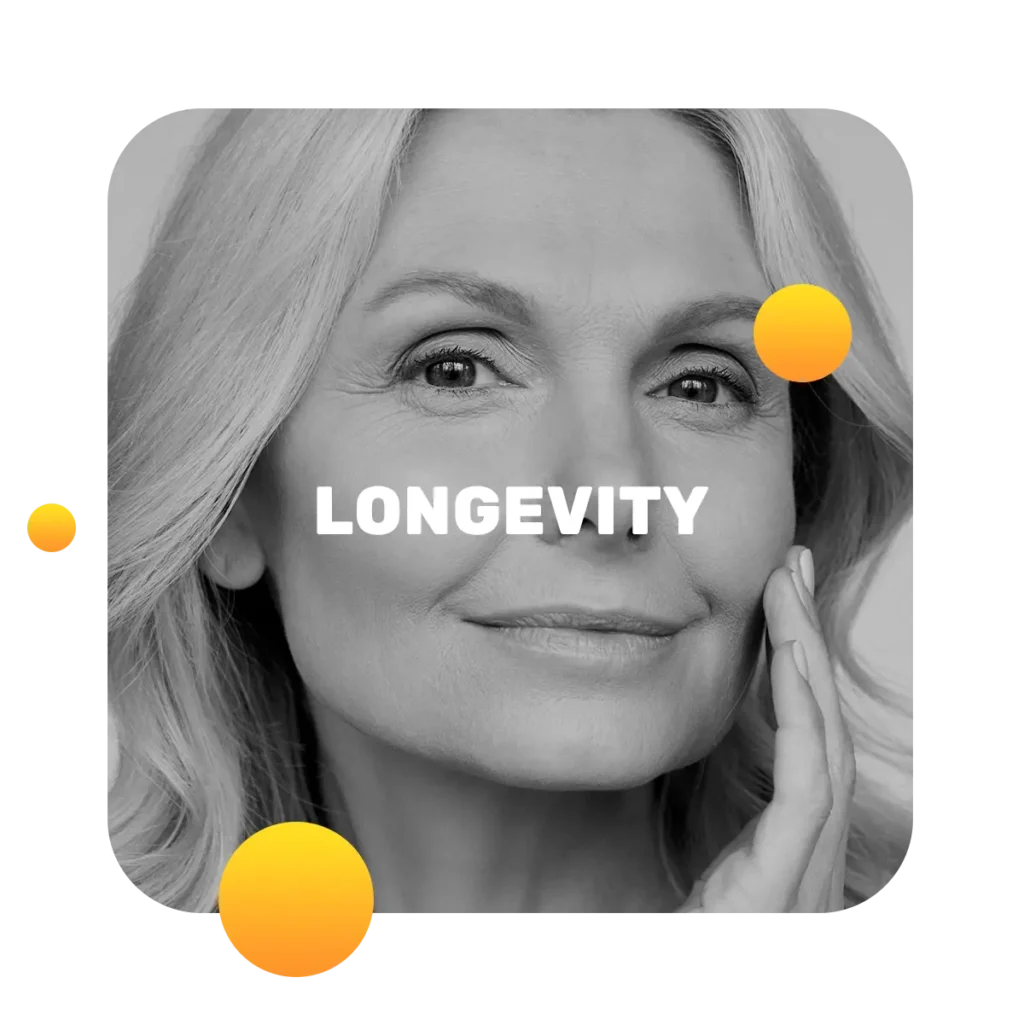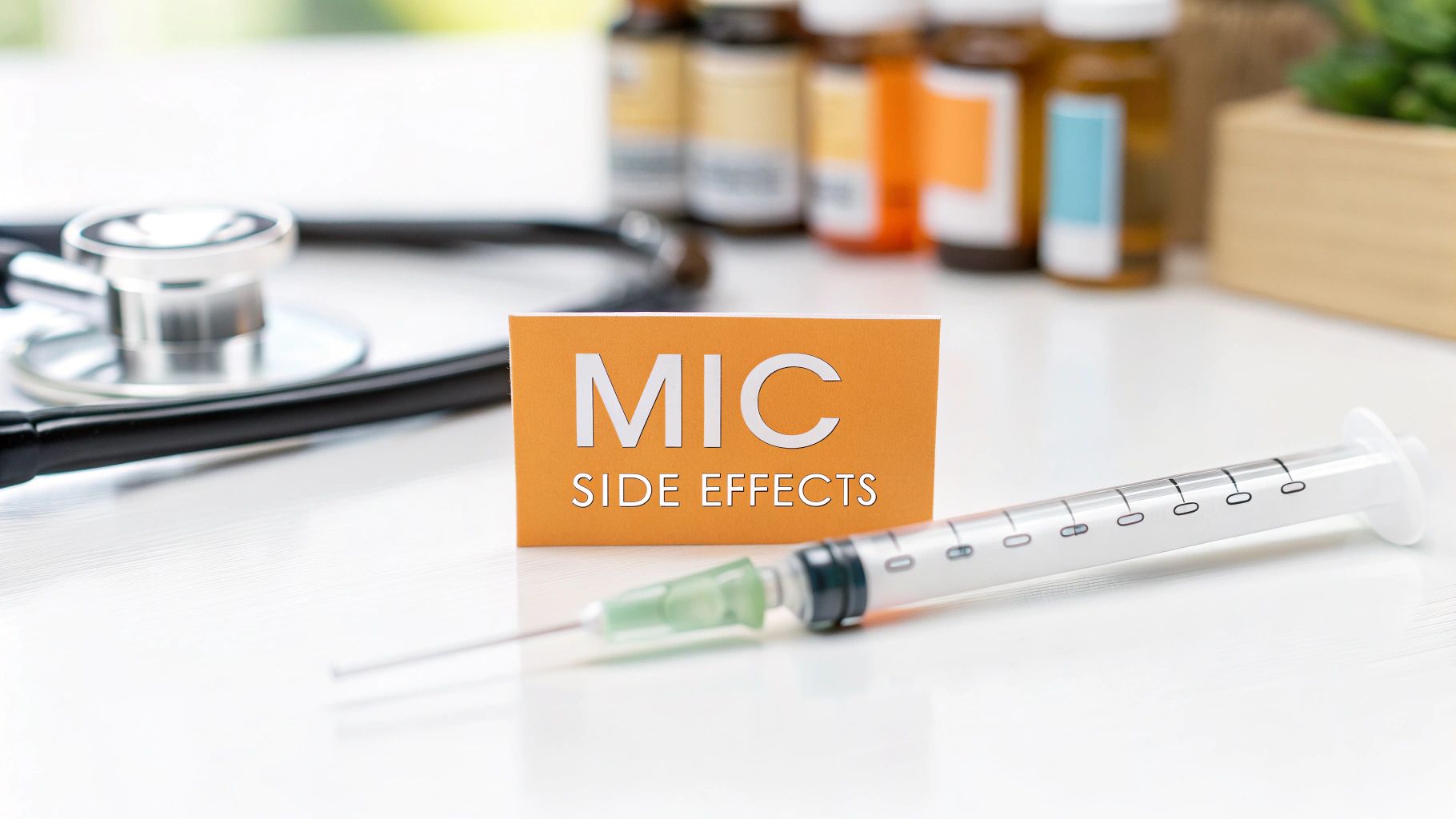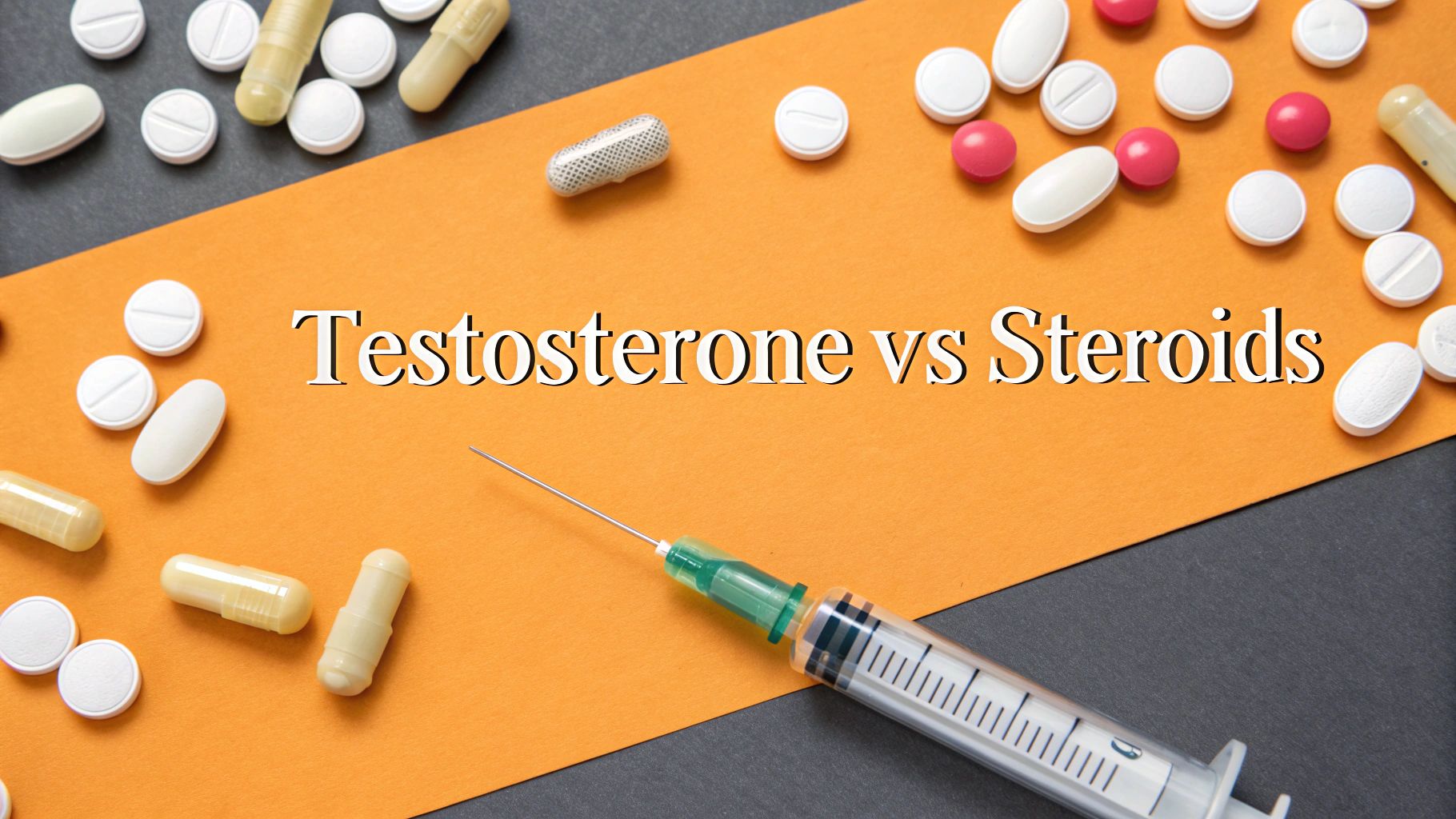Your Guide on How to Prevent Wrinkles
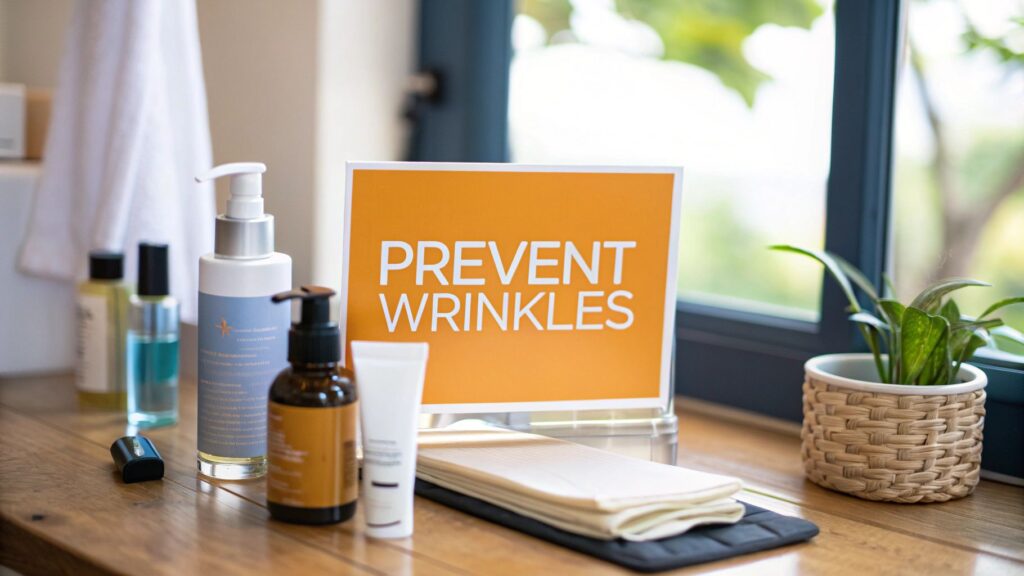
Preventing wrinkles isn't about chasing last-minute fixes; it's about playing the long game with a consistent, defensive strategy. The real secret is a three-pronged approach: shielding your skin from sun damage, using targeted ingredients to keep collagen strong, and adopting healthy lifestyle habits that build resilient skin from the inside out.
Your Blueprint for Wrinkle Prevention
Let's cut through the noise and get straight to what actually works for preventing wrinkles. This isn't about miracle creams or overnight transformations. It's about a smart, science-backed approach that focuses your efforts where they matter most.
Before we dive into specific products, it's crucial to understand what drives skin aging in the first place. It’s a mix of your genetics and your environment. You can’t change your DNA, but you have a surprising amount of control over the external factors—and this is where you can make a huge difference.
The number one enemy? Sun exposure. But lifestyle choices like diet, hydration, and sleep also play a massive role in maintaining your skin’s structural integrity and youthful bounce.
The Four Pillars of Skin Health
I like to think of a truly effective strategy as being built on four core pillars. Each one tackles a different aspect of skin aging, and when you put them all together, they create a seriously powerful defense.
To make this simple, I've broken down these foundational concepts into a quick-reference table.
The Four Pillars of Wrinkle Prevention
This table summarizes the fundamental strategies for preventing wrinkles, providing a quick reference for the core concepts discussed in this guide.
| Pillar | Primary Action | Key Ingredients or Tools | Impact Level |
|---|---|---|---|
| Environmental Shielding | Defending against daily UV and pollution damage. | Broad-spectrum SPF, Vitamin C, Antioxidants | High |
| Cellular Regeneration | Promoting cell turnover and collagen production. | Retinoids, Peptides, Growth Factors | High |
| Internal Support | Fueling the body’s natural repair processes. | Hydration, Nutrient-Rich Diet, Quality Sleep | Medium |
| Habit Formation | Avoiding behaviors that accelerate aging. | Quitting smoking, reducing sugar, managing stress | Medium |
By consistently addressing each of these pillars, you create a comprehensive defense system that works around the clock to keep your skin healthy and smooth.
This next visual really drives home why this blueprint is so critical.
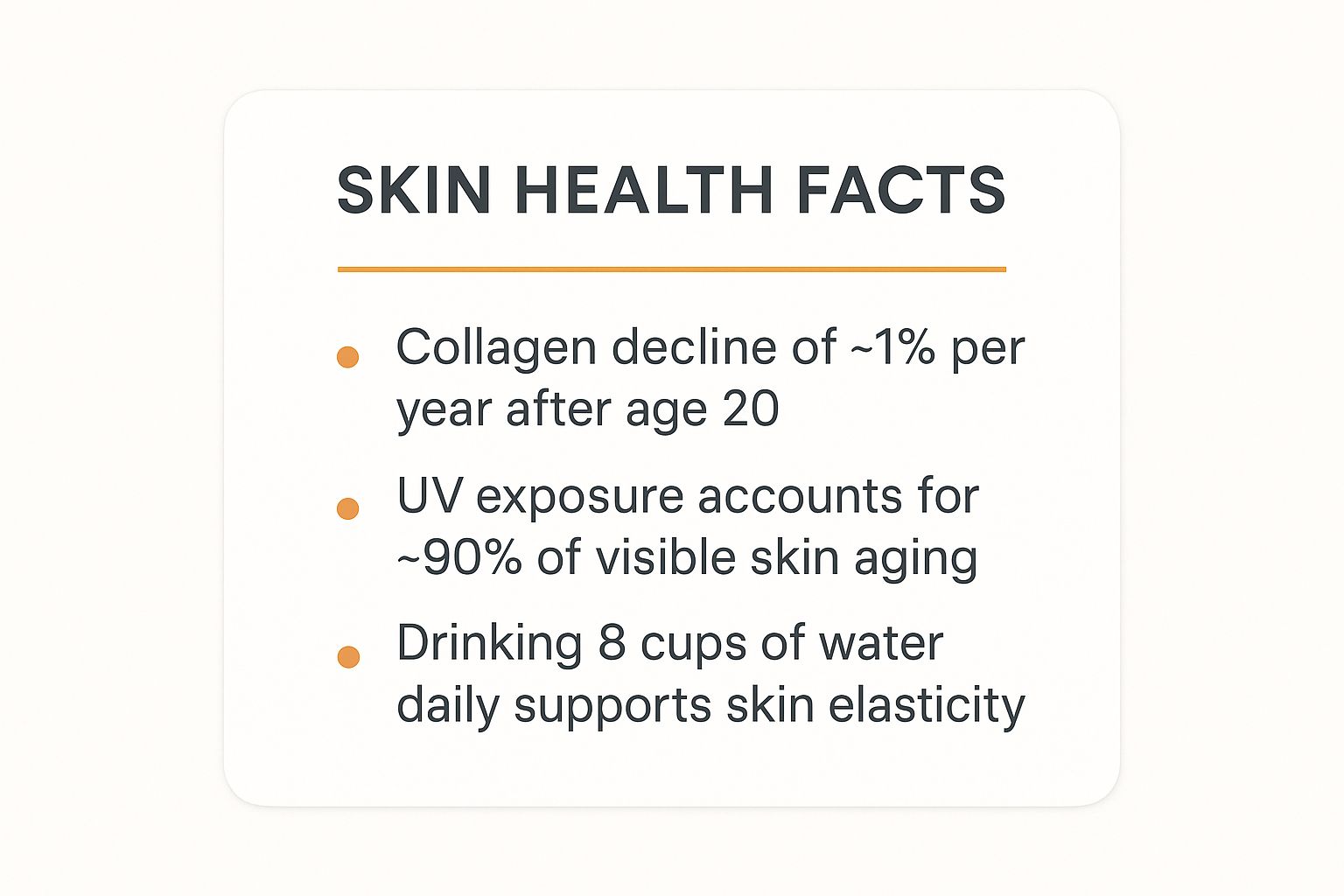
As you can see, the vast majority of visible aging is something we can actually prevent. The image also highlights those internal factors, like collagen loss and hydration, that we have the power to influence directly.
The most effective approach on how to prevent wrinkles is proactive, not reactive. By focusing on these pillars daily, you are investing in your skin's future resilience and vitality.
Throughout this guide, we’ll break down each of these pillars into simple, actionable steps. We’ll cover everything from mastering your daily sun defense to incorporating powerhouse anti-aging ingredients into your routine.
And if you're looking for complementary strategies, our guide on how to reduce wrinkles naturally offers some great insights into holistic approaches that support these core principles. By combining smart external protection with robust internal health, you create the most effective blueprint for maintaining smooth, youthful skin for years to come.
Mastering Your Daily Defense Against Sun Damage
If you take away just one thing from this guide, let it be this: commit to daily sun protection. It is, without a doubt, the single most powerful habit you can build for the long-term health of your skin. Up to 90% of the visible signs of skin aging are a direct result of UV exposure, making your daily defense against the sun the absolute cornerstone of any serious anti-wrinkle routine.
But a truly effective shield is more than just grabbing whatever sunscreen is on sale. It's about understanding what your skin is up against and choosing your tools with intention. This means picking the right SPF for your actual lifestyle, not just the one with the highest number, and pairing it with other protective ingredients to build a serious barrier against environmental assault.
Choosing Your Sunscreen Wisely
Walking down the SPF aisle can feel pretty overwhelming. With a sea of options, how do you even begin to choose? The trick is to match the product to your daily reality.
Think about what your average day looks like. Someone who works indoors but sits near a window has very different needs than someone who’s outside for hours, whether for work or just for fun.
- For Office Days (Low Exposure): An SPF 30 is generally all you need. Look for lightweight formulas—you’ll often find them in daily moisturizers—that feel so good you’ll actually want to put them on every morning.
- For Active Days (High Exposure): If you're spending a lot of time outdoors, running, or swimming, you need to level up to an SPF 50+. You’ll also want a formula that’s water-resistant and be ready to reapply it every two hours (or even more often if you’re sweating a lot).
Beyond the number, you’ll see two main types of sunscreen, and they work in completely different ways.
| Sunscreen Type | How It Works | Best For |
|---|---|---|
| Mineral (Physical) | Uses zinc oxide or titanium dioxide to create a physical barrier that sits on top of your skin and deflects UV rays. | Sensitive or acne-prone skin. It's much less likely to cause irritation. |
| Chemical | Absorbs into the skin, where it converts UV radiation into heat and then releases it from the body. | Daily wear, especially under makeup. These formulas tend to be lighter and more invisible on the skin. |
Neither one is universally "better." The best sunscreen is simply the one you'll use consistently, every single day.
The Power of Antioxidant Synergy
Here’s a hard truth: sunscreen doesn't block 100% of UV rays. Some damage still slips through in the form of free radicals—those unstable molecules that chew up your collagen and speed up the aging process. This is where antioxidants, especially Vitamin C, become your secret weapon.
Think of it this way: Sunscreen is the armor you wear into battle, blocking the primary attacks. Vitamin C is the elite team of medics on the inside, neutralizing any stray enemies that manage to breach your defenses.
By layering a topical Vitamin C serum under your daily sunscreen, you’re not just blocking damage—you’re actively neutralizing the free radicals that your sunscreen might miss. This one-two punch provides a level of protection that sunscreen alone just can't match.
Applying a Vitamin C serum every morning, right before your moisturizer and SPF, helps your skin fight off damage from both the sun and environmental pollution all day long. It's a simple step that transforms your routine from passive protection to a proactive defense system.
Building Your Morning Protection Routine
How you layer your products is just as important as what you’re using. Getting the order wrong can make even the most expensive ingredients completely useless. Here’s a simple, practical way to structure your morning routine for maximum protection.
- Gentle Cleanse: Start with a clean slate. Use a gentle, pH-balanced cleanser to get rid of any overnight impurities without stripping your skin.
- Apply Vitamin C Serum: While your skin is still a little damp, press a few drops of Vitamin C serum into your face and neck. The moisture helps it absorb better.
- Hydrate with Moisturizer: Next up is your daily moisturizer. This locks in hydration and creates a smooth base for the most important step.
- Finish with Broad-Spectrum SPF: This is always, always the last step in your skincare routine before makeup. Apply a generous amount of a broad-spectrum sunscreen with at least SPF 30.
Let’s put this into a real-world context. Meet Sarah, a 30-year-old graphic designer who spends her days in an office flooded with natural light from large windows. Her morning routine is simple but smart. After washing her face, she applies a Vitamin C serum, then follows it up with a lightweight moisturizing lotion that already contains SPF 30. This two-in-one product saves her time but ensures she’s shielded from the incidental UV exposure she gets all day.
On the weekends, though, Sarah loves to go hiking. On those days, she switches things up. She uses her Vitamin C serum, a simple moisturizer, and then a separate, water-resistant SPF 50. She also tosses it in her backpack to reapply every couple of hours. This adaptive approach means her skin is always getting the right level of protection for the situation. By mastering this daily defense, you are building the strongest possible foundation for preventing future wrinkles.
Getting to Know the Heavy-Hitter Anti-Aging Ingredients
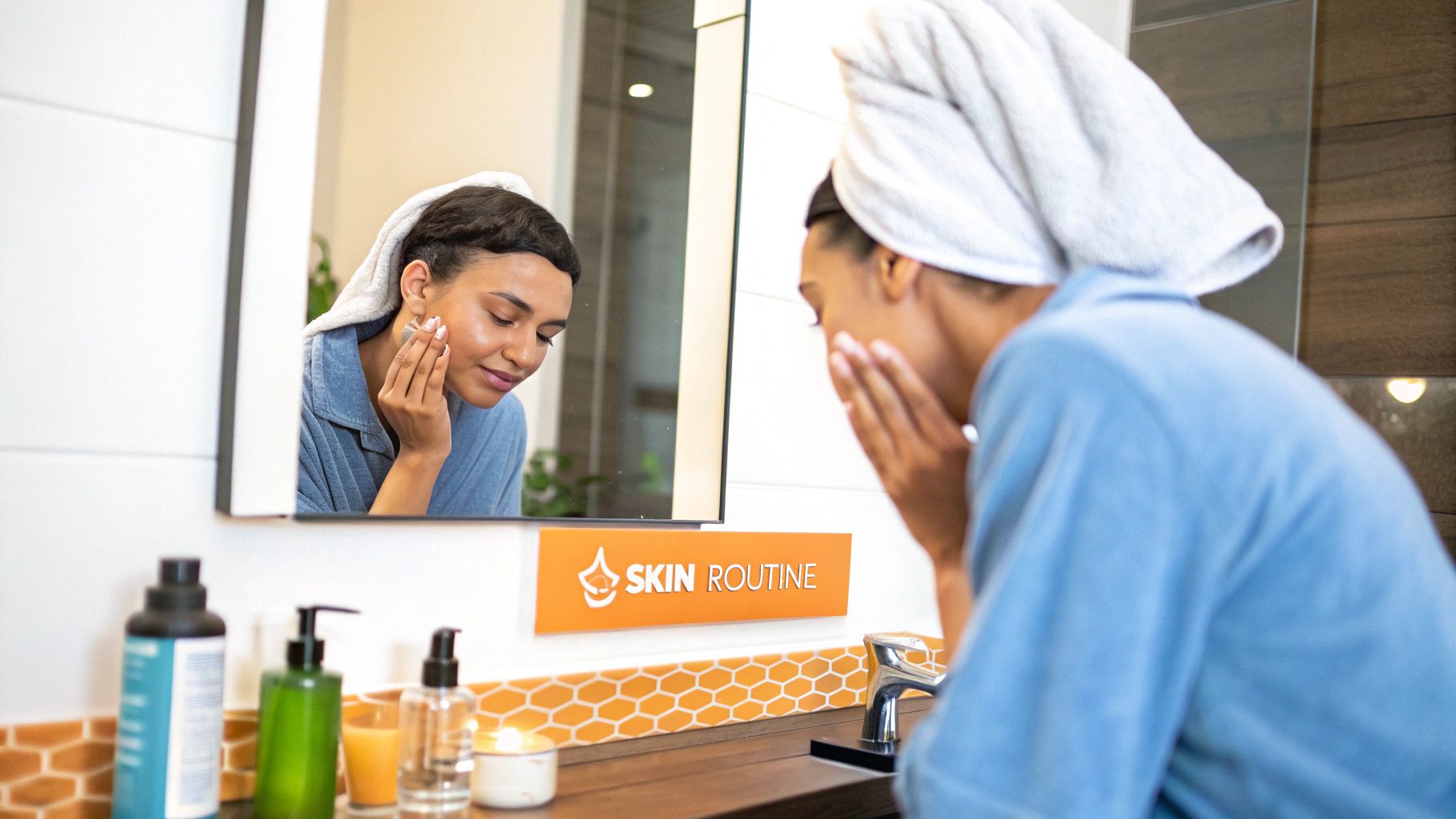
While sunscreen is your non-negotiable first line of defense, a truly solid strategy for preventing wrinkles relies on targeted ingredients. These are the powerhouses that work beneath the surface to rebuild, repair, and hydrate your skin.
Diving into the world of skincare can feel overwhelming, but a handful of key actives have consistently proven their worth through years of scientific scrutiny. When used correctly and consistently, these are the ingredients that deliver real, visible results.
The global interest in these compounds is impossible to ignore. Anti-wrinkle skincare is a massive market, and for good reason. Projections show the industry is set to nearly double, jumping from USD 11.18 billion in 2025 to a staggering USD 21.3 billion by 2035. That's a steady growth rate of 6.7% every year. For a deeper dive into these numbers, you can check out the full anti-wrinkle products market report.
This boom reflects a clear demand for solutions that actually work. So, let's cut through the noise and break down the essential ingredients you should be looking for.
The Gold Standard: Retinoids
When it comes to wrinkle prevention, retinoids are in a league of their own. As derivatives of Vitamin A, these are hands-down the most studied and proven anti-aging ingredients out there. Their main job is to put your cellular turnover into high gear, essentially telling your skin to get rid of old, damaged cells and replace them with fresh, healthy ones.
This rapid regeneration process does two critical things. First, it helps keep your skin’s surface smooth and your tone even. More importantly, it signals the deeper layers of your skin to ramp up collagen production—the very protein that keeps your skin firm and plump.
There are a few different types of retinoids, and their strength varies quite a bit:
- Retinol: This is the most common over-the-counter (OTC) version. It's effective, but your skin has to convert it into its active form (retinoic acid), which makes it gentler but slower to show results.
- Retinaldehyde (Retinal): Think of this as one step closer to the active form. It delivers faster results than retinol, usually with less irritation than you'd get from a prescription.
- Tretinoin (Retin-A): This is pure retinoic acid, available only by prescription. It's incredibly effective for both wrinkles and acne but can come with significant irritation, redness, and peeling, especially when you're just starting out.
Pro Tip: When you're new to retinoids, the mantra is "start low and go slow." Begin with a low-concentration product just two or three nights a week. Apply it to clean, dry skin, wait a few minutes, then follow up with a simple, soothing moisturizer to buffer any potential irritation.
The Building Blocks: Peptides
If retinoids are the project managers telling your skin cells what to do, think of peptides as the text messages carrying those instructions. Peptides are short chains of amino acids, which are the literal building blocks of essential proteins like collagen and elastin. Without a healthy supply of these proteins, skin loses its firmness and begins to sag, leading to wrinkles.
As we get older, our natural production of these proteins slows down, and the communication channels in our skin get less efficient. Applying peptides topically is like sending a direct message to your skin cells, signaling them to get back to work and start making more collagen.
Different peptides have different jobs:
- Signal Peptides: These are the most common type you'll find in anti-aging skincare. They essentially trick your skin into thinking collagen has been damaged, which stimulates it to produce more.
- Carrier Peptides: These help deliver essential trace minerals to the skin, which are vital for things like wound healing and enzymatic processes.
- Neurotransmitter-Inhibiting Peptides: Often marketed as "Botox in a bottle," these work to soften fine lines caused by muscle movement. Their effect is much more subtle than an injectable, but they can help.
By adding a peptide serum to your routine, you're reinforcing your skin’s foundational structure, helping it stay dense and resilient.
The Hydration Hero: Hyaluronic Acid
While retinoids and peptides are busy rebuilding, hyaluronic acid (HA) is focused on one thing: hydration. And hydrated skin is plump, bouncy, and shows fine lines far less.
HA is a humectant, which means it draws moisture from the air and locks it into your skin. In fact, a single molecule of hyaluronic acid can hold up to 1,000 times its weight in water.
This isn't just about surface-level moisture. A well-formulated HA serum can penetrate the skin to deliver deep, lasting hydration that plumps everything up from the inside. This has an immediate cosmetic effect, making fine lines look less noticeable almost instantly.
But the long-term benefits are just as important. When your skin is properly hydrated, its natural protective barrier is stronger and healthier. A robust barrier is much better at defending against the environmental stressors that cause premature aging. Think of it as creating the perfect internal environment for all your skin's repair processes to function at their absolute best.
Lifestyle Habits That Protect Your Skin
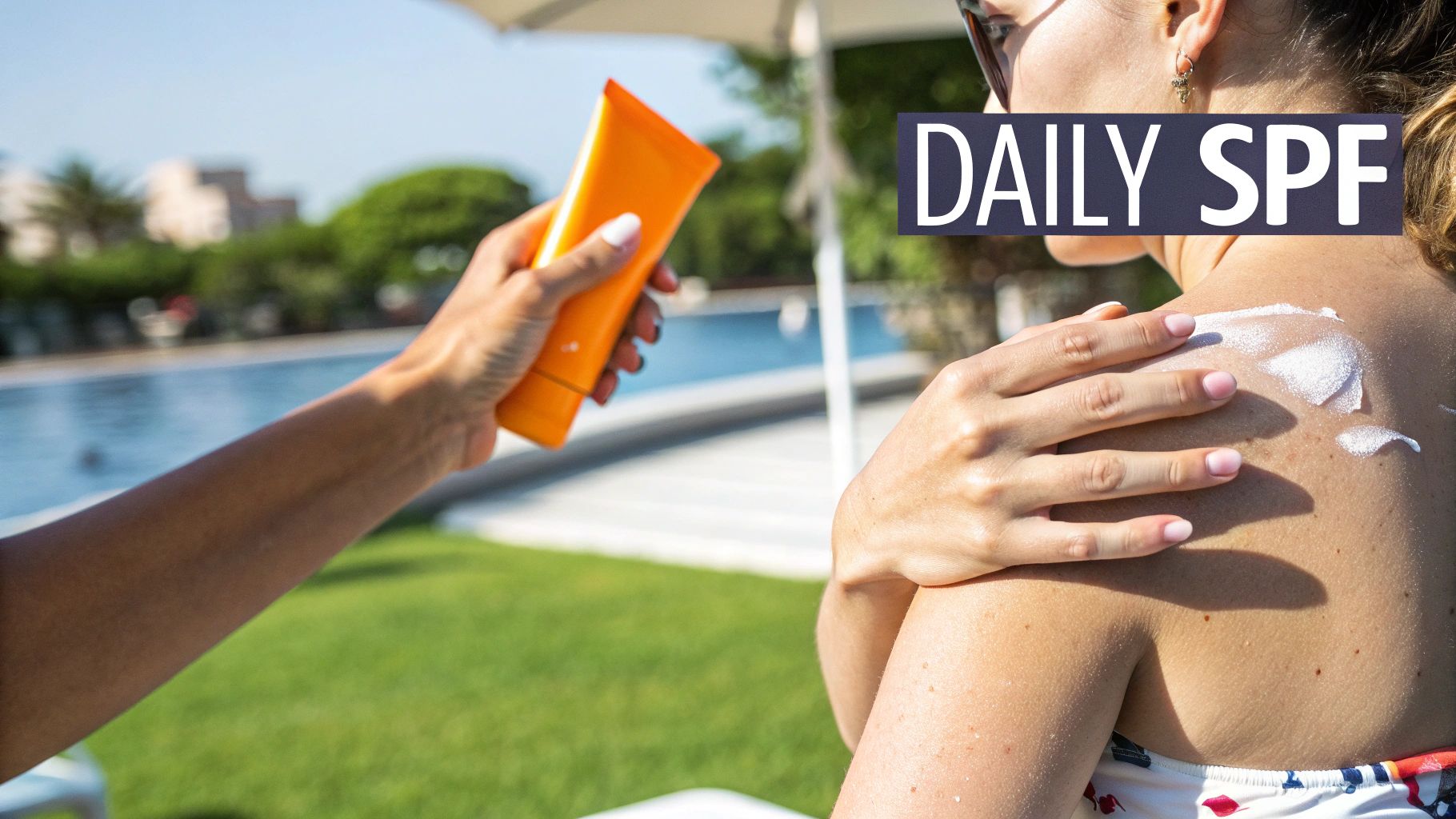
While the right topical ingredients and a daily sunscreen habit form your first line of defense, what you do every day has a massive impact on your skin's health from the inside out. Your lifestyle choices are the unsung heroes in the fight against wrinkles. They work behind the scenes to support cellular repair, maintain your skin's structure, and fend off internal aging triggers.
Small, consistent choices in what you eat, how you sleep, and the way you manage stress can either put the aging process on fast-forward or build a stronger, more resilient foundation for your skin. Think of it as supporting your skincare routine from a much deeper level, creating an internal environment where healthy, youthful skin can truly thrive.
Fueling Your Skin with an Antioxidant-Rich Diet
The old saying "you are what you eat" is especially true for your skin. A diet heavy on processed foods, unhealthy fats, and sugar is a recipe for inflammation, a key driver of premature aging. On the other hand, a diet packed with antioxidants is like giving your body an internal army to fight off damage.
Antioxidants are powerful compounds that neutralize free radicals—those unstable molecules generated by UV rays, pollution, and even just your body's normal functions. If left unchecked, these free radicals wreak havoc on your cells, including the precious collagen and elastin that keep your skin firm.
Here are some easy ways to get more of them on your plate:
- Embrace Color: Fill your meals with a rainbow of fruits and vegetables. Berries, leafy greens like spinach, and brightly colored peppers are loaded with skin-protecting vitamins like C and E.
- Healthy Fats are Your Friend: Make sure you're getting enough omega-3 fatty acids from sources like salmon, walnuts, and flaxseeds. These fats help maintain the skin's lipid barrier, keeping it hydrated and supple from within.
- Sip on Green Tea: This classic beverage is rich in polyphenols, which have been shown to help protect against sun damage and calm inflammation.
By focusing on whole, nutrient-dense foods, you give your skin the essential building blocks it needs for constant repair and regeneration.
The Hidden Aging Effect of Sugar
One of the biggest dietary villains behind wrinkles is sugar. When you eat too much of it, a process called glycation kicks off in your bloodstream. During glycation, sugar molecules latch onto proteins—including your skin's collagen and elastin.
This attachment creates harmful new molecules called advanced glycation end products, or AGEs for short. These AGEs are bad news. They turn your normally flexible and strong collagen fibers into something rigid, weak, and brittle. The visible result? A loss of elasticity, sagging skin, and the formation of deep-set wrinkles.
Slashing your intake of refined sugars and simple carbs is one of the single most effective dietary changes you can make to protect your existing collagen and slow down a major pathway of skin aging.
This isn't about banning dessert forever. It's about being mindful of hidden sugars in things like sauces, dressings, and processed snacks, and choosing whole foods whenever possible.
The Critical Role of Hydration and Sleep
Proper hydration is absolutely fundamental to skin health. When your skin is dehydrated, it immediately loses its plumpness, making fine lines look much more pronounced. Drinking plenty of water throughout the day helps maintain optimal moisture levels from the inside, which is crucial for skin elasticity. For more targeted strategies, it’s worth learning more about how to improve skin elasticity through both internal and external methods.
Just as important is getting consistent, high-quality sleep. During deep sleep, your body shifts into repair mode. Blood flow to the skin increases, and it gets to work rebuilding its collagen and repairing damage from the day's UV exposure and environmental stress.
Chronic sleep deprivation slams the brakes on these crucial processes. It can also lead to higher levels of the stress hormone cortisol, which is notorious for breaking down collagen. Aiming for 7-9 hours of quality sleep per night isn't a luxury; it's a foundational pillar of any serious anti-aging plan. Small habits, like putting screens away an hour before bed and creating a relaxing nighttime ritual, can make a huge difference in your sleep quality—and, by extension, your skin's appearance.
Global Perspectives On Preventing Wrinkles
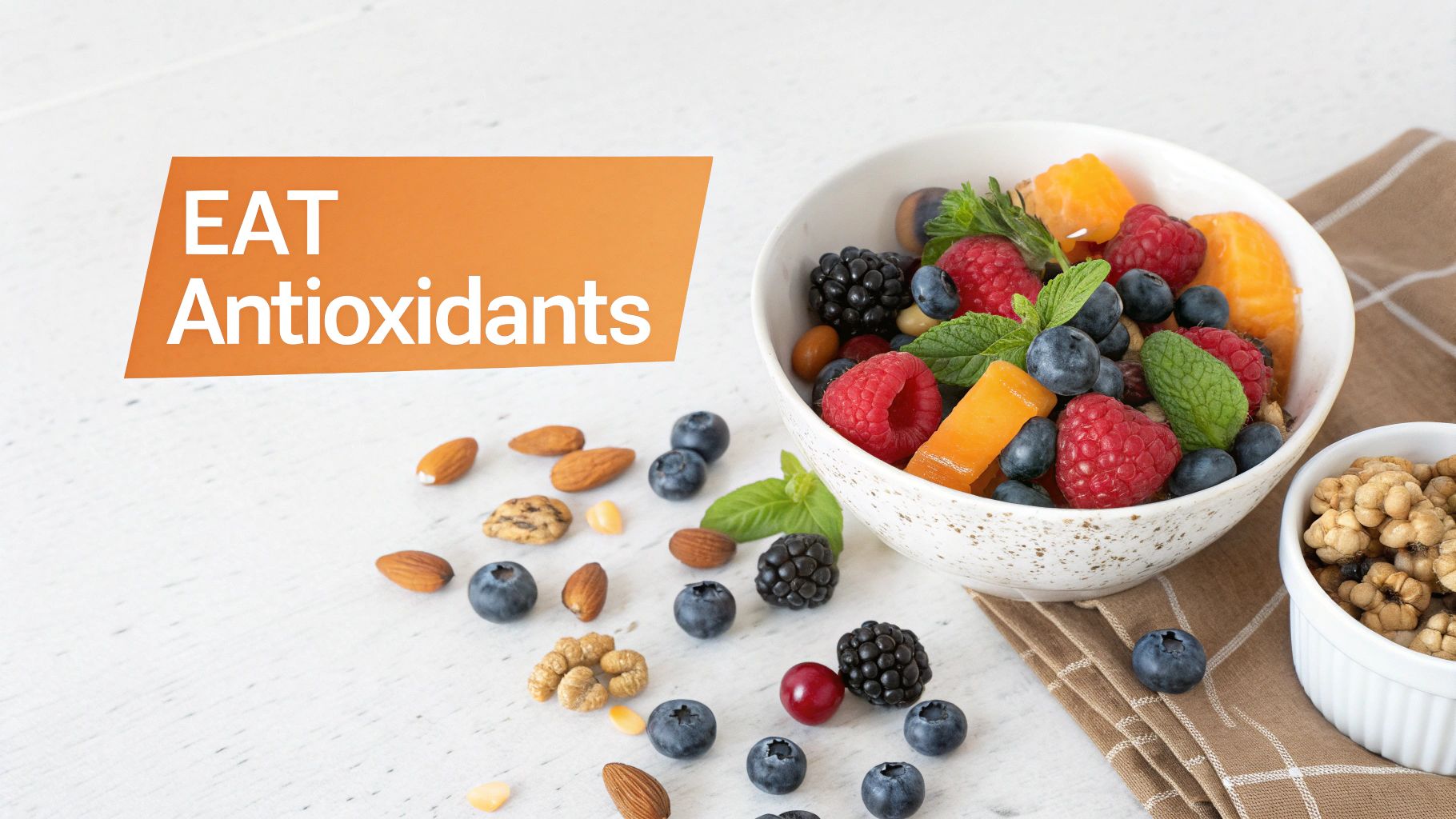
Everyone wants smooth, youthful skin, but how we get there is a story shaped by culture, lifestyle, and local beauty standards. The approach to anti-aging can look completely different from one continent to the next. Digging into these perspectives isn’t just interesting—it can give you some powerful new ideas for your own routine.
The numbers tell a fascinating story. The Asia Pacific anti-wrinkle market, for example, is a powerhouse, holding a 45.2% share valued at a staggering USD 19.4 billion. This massive market is fueled by the region's aging population and a deep-seated cultural focus on meticulous skincare, especially in countries like China, Japan, and South Korea. If you want to dive deeper, you can find more details on these global market trends on market.us.
These figures aren't just about sales; they point to a core philosophy. In East Asia, the game has always been about prevention and protection, not damage control.
The Asian Philosophy Of Prevention
In skincare hotspots like South Korea and Japan, the battle against aging is proactive, not reactive. That famous multi-step skincare routine isn't just a fleeting trend; it’s a daily ritual built on the belief that gentle, consistent care is the secret to lifelong skin health.
This philosophy is all about a few core principles:
- Layering Hydration: Essences, toners, and hydrating serums are non-negotiable staples. The idea is that plump, well-hydrated skin is more resilient and far less likely to develop fine lines.
- Sun Protection Is Everything: Rigorous, year-round sun protection is an absolute priority. It’s completely normal to see a huge variety of sunscreens used daily, rain or shine.
- Gentle, Nurturing Formulas: Ingredients like snail mucin, ginseng, and fermented rice water are beloved for their soothing and repairing properties. The goal is to nurture the skin barrier, not blast it with harsh actives.
Here, skincare is seen as an act of self-care and a long-term investment that starts young to keep those first signs of aging at bay for as long as possible.
The North American Drive For Correction
Head over to North America, and you’ll find a different vibe. The market here often leans toward a more results-driven, clinical approach. Consumers are looking for high-potency formulas with scientifically proven ingredients that promise visible, and often rapid, results. The mindset is frequently more about correcting existing issues than just preventing them.
This market is defined by a few key traits:
- High-Potency Actives: There’s a huge demand for products packed with high concentrations of retinoids, vitamin C, and exfoliating acids like AHAs and BHAs.
- Dermatologist-Backed Brands: Consumers put a lot of trust in products and ingredients that are backed by solid scientific research and recommended by medical professionals.
- Streamlined Routines: While complex routines exist, many people prefer a simplified approach, focusing on a few powerful, multi-tasking products that get the job done.
This focus on potent, corrective ingredients has fueled a demand for advanced treatments that bridge the gap between at-home care and professional procedures.
The beauty of understanding these different global mindsets is that you can cherry-pick the best of both worlds. For example, you could adopt the Asian dedication to daily sun protection and deep hydration while weaving in the powerful, clinically-backed actives favored in North America. This blended philosophy can help you build a far more effective and well-rounded routine. You can get a sneak peek at what's on the horizon by reading up on the latest anti-aging treatment trends to watch out for this 2024.
Regional Skincare Priorities for Wrinkle Prevention
It’s fascinating to see how different cultures prioritize their anti-aging efforts. The table below breaks down some of the key differences in focus, popular ingredients, and what’s driving the market in various parts of the world.
| Region | Primary Focus | Popular Ingredients and Approaches | Market Driver |
|---|---|---|---|
| Asia Pacific | Prevention, hydration, and brightening | Snail mucin, ginseng, hyaluronic acid, rigorous sun protection, multi-step routines. | Cultural emphasis on youthful appearance, large aging population. |
| North America | Correction, potent results, and clinical efficacy | Retinoids, Vitamin C, peptides, AHAs/BHAs, dermatologist-endorsed brands. | Demand for visible, fast results and science-backed ingredients. |
| Europe | Graceful aging, barrier repair, and natural ingredients | Bakuchiol, botanical oils, gentle exfoliants, focus on "clean beauty" and sustainability. | Wellness-oriented lifestyle, strong regulatory standards for cosmetics. |
As you can see, while the end goal is similar, the journey to youthful skin is deeply personal and culturally influenced. By appreciating these different philosophies, you can create a routine that’s not just effective, but perfectly suited to you.
Common Questions on Wrinkle Prevention
Navigating the world of skincare can feel like learning a new language. With so much information out there, it's completely normal to have questions as you start to build a routine that actually works. My goal here is to cut through the noise and give you clear, direct answers to the most common questions people have about preventing wrinkles.
Let's tackle some of the biggest ones head-on so you can feel confident in the choices you make for your skin.
At What Age Should I Start a Wrinkle Prevention Routine?
There’s no magic number, but if you ask any dermatologist, they'll likely tell you that your mid-20s is the perfect time to get serious. This isn't a random age; it's when your body's natural collagen production starts its slow but steady decline—typically dropping by about 1% each year.
At this stage, the goal isn’t about heavy-duty, corrective treatments. It's all about playing strong defense. Your routine should be built around three simple, non-negotiable habits:
- Daily Sunscreen: I mean every single morning, without fail. A broad-spectrum SPF 30 or higher is your best friend.
- Antioxidant Protection: A good Vitamin C serum in the morning is like a shield against environmental damage from pollution and UV rays.
- Consistent Hydration: Keeping your skin well-moisturized is fundamental for supporting its protective barrier.
By locking in these core habits early, you create a powerful foundation that will protect your skin’s youthful structure for years to come. You’re playing the long game, not looking for a quick fix.
Are Expensive Skincare Products More Effective?
This is one of the biggest myths in the beauty industry, and the short answer is a hard no. A higher price tag absolutely does not guarantee a better product. More often than not, the cost of a skincare item is tied to its marketing budget, fancy packaging, and brand name—not the effectiveness of the formula inside.
What really matters are the active ingredients and the formulation itself. A well-formulated drugstore moisturizer with a proven ingredient like retinol or niacinamide will always outperform a luxury cream filled with nice-sounding but scientifically unproven botanicals.
Your focus should always be on the ingredient list, not the price tag. Look for products that feature well-researched actives like retinoids, peptides, and vitamin C at effective concentrations.
Plenty of accessible brands now offer fantastic, science-backed formulas that deliver real results without emptying your wallet. Smart consumers know that efficacy is found in the science, not the sparkle. This is critical knowledge in a booming industry; the global anti-aging market, valued at USD 73 billion in 2024, is projected to hit nearly USD 141 billion by 2034. You can dig deeper into these anti-aging market trends to see just how massive the industry is.
Can I Reverse Wrinkles That Have Already Formed?
While completely "reversing" a deep-set wrinkle with topical products isn't quite possible, you can absolutely make a significant improvement in its appearance. Prevention will always be more effective than correction, but the right ingredients and treatments can definitely soften existing lines and improve your overall skin texture.
The key is to manage your expectations. A fine line caused by dehydration might vanish with a good moisturizer, but a deep, etched-in wrinkle from years of sun damage is a different beast entirely.
Here's what genuinely works:
- Retinoids: These are the gold standard for improving the look of existing wrinkles. By speeding up cell turnover and kicking collagen production into high gear, they can visibly soften lines over time. It takes patience, though—the best results often appear after 6 to 12 months of consistent use.
- Peptides: These amino acid chains are like little messengers that signal your skin to produce more collagen, helping to rebuild firmness from within and plump things up.
- Professional Treatments: For more dramatic results, in-office procedures like chemical peels, microneedling, and laser resurfacing can deliver a level of improvement that topicals alone just can't match.
Ultimately, a consistent routine focused on sun protection and proven actives will not only prevent new wrinkles but will also improve the health and appearance of your current skin, making those existing lines far less prominent.
At Elite Bioscience, we provide targeted peptide and vitamin therapies designed to support your skin's health from a foundational level. Our treatments, like collagen-stimulating peptides, are prescribed by doctors and delivered discreetly to your door, offering a powerful way to enhance your existing skincare routine and promote long-term skin elasticity and vitality. Explore our anti-aging solutions at elitebioscience.co.
QUICK SEARCH
Make an account today to start your journey towards a better and healthier lifestyle.
